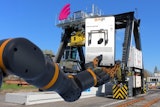Since the inception of the first industrial electric motors, manufacturers have been developing technology to produce better motors which use the least amount of energy possible. While perhaps increasing the efficiency of electric motors is not a relatively new phenomenon, the last several decades of technological advancements in motors, as well as manufacturing methods, has vastly improved the efficiency of electric motors.
As the energy crisis of the 70s peaked, the manufacturing sector began looking for better ways to save energy. What was discovered was that electric motors were consuming the lion’s share of electricity in industrial facilities. While the news of the day continually reported about oil shortages and compact car development, electric motor manufacturers were quietly getting better at producing motors that consumed less electricity.
When these high efficiency and premium efficient motors entered the marketplace, organizations such as NEMA (National Electrical Manufacturers Association) and CEE (Consortium for Energy Efficiency) worked with motor manufacturers to develop standard levels of efficiency which motors were to be manufactured to. These standards were later adopted by the DOE (Department of Energy) as the benchmark for the Energy Policy Act of 1992 (EPAct), which went into effect October 1997. This law mandated that general purpose TEFC (totally enclosed fan cooled) and ODP (open drip proof) motors, 1-200 Hp, were required to meet the energy efficient table as defined by NEMA.
Both the U.S. and Canada require motors to be tested for efficiency in a certified lab using specific test procedures such as IEEE 112 Method B or Canadian Standards Association CSA 390. Most NEMA members have their test labs certified. Although the IEC test method IEC 60034-2-1 has been harmonized with the IEEE and CSA methods, the EU does not require a certified test lab.
The most recent energy law, which broadened the scope of EPAct in the United States, was the Energy Independence and Security Act of 2007 (EISA). This new law went into effect on December 19, 2010. The Canadian version of this law, enacted by Natural Resources Canada (NRCan), went into effect on April 12, 2012. These new laws brought the original 1-200 Hp, 2-4-6 pole motors up to the premium efficient levels of table 12-12. A second group of motors was also added under this new legislation, which includes U-frame motors, close-coupled pump motors, footless motors, and 8 pole motors, to name a few. Complete details of the law and a complete listing of motor types affected can be found at www.baldor.com by clicking on the energy efficiency banner.
Understanding the laws and which motors are required to meet them is most of the battle. When one has developed a familiarity with these laws and what they mean, including the motor efficiency tables, it’s a matter of checking this information against the motor manufacturer’s nameplate to identify a motor’s efficiency. It is important to note that if a motor was purchased and installed prior to the implementation of the energy law, the motor only had to meet the requirements of any law in place during the time of installation. If an old inefficient motor were to fail it can be repaired, but one must count the cost and decide if it would be more beneficial to invest the money toward a new, premium efficient motor. Additionally, if one has a motor in stock that was built prior the energy bill, the motor is also good to use as well as long as it was in the country prior to the energy bill implementation.
The energy efficiency laws in the U.S. and Canada are for both motors sold in commerce and motors embedded in machinery. If a company is importing a machine using covered electrical motors, those motors must be compliant with the laws.
Identifying and understanding the information on motor nameplates can be a bit tricky, especially given the fact that all motor nameplates do not always look the same. Two of the main things to look for are the NEMA nominal efficiency and the Certified Compliant (CC) mark for the U.S. and an NRCan mark for Canada. As other countries adopt Minimum Efficiency Performance Standards (MEPS), specific approvals and markings may be required.
The NEMA nominal efficiency is the nominal efficiency as defined by the NEMA tables for a particular motor enclosure, size, and speed. This efficiency is expressed in a percentage. For instance, if a motor’s efficiency is labeled as 91 percent efficient, then that means the motor will convert 91percent of the electrical energy into mechanical energy, resulting in 9 percent of losses due to heat and other factors. For each respective NEMA nominal efficiency there is a NEMA guaranteed minimum efficiency based on a 10 percent variance in losses.
The CC mark is the number provided to each motor manufacturer after their motor line has been approved by the DOE. If this number is not present on the motor, it could be because that particular motor is exempt from law, was built prior to the law, or has not been properly submitted to the DOE for approval.
Another distinguishable feature to look for on motor nameplates is the NEMA Premium® logo. Although this logo is a registered trademark of NEMA, motor manufacturers can receive the license from NEMA to use this logo on their nameplates and marketing materials. One of the requirements of NEMA Premium® usage is for the manufacturer to annually submit their line of motors for efficiency testing to a certified third party lab facility.
If questions or concerns arise related to identifying the proper motor for an application, especially in regards to efficiency, one should contact their local motor sales representative. Any reputable motor manufacturer should be more than happy to back up their motor line with whatever data is necessary to demonstrate the performance of their motors. If a manufacturer makes excessive claims to promote its products, but can’t back up their claims with the proper documentation, then they should be questioned or avoided. As the old saying goes, if something sounds too good to be true, it probably is.























